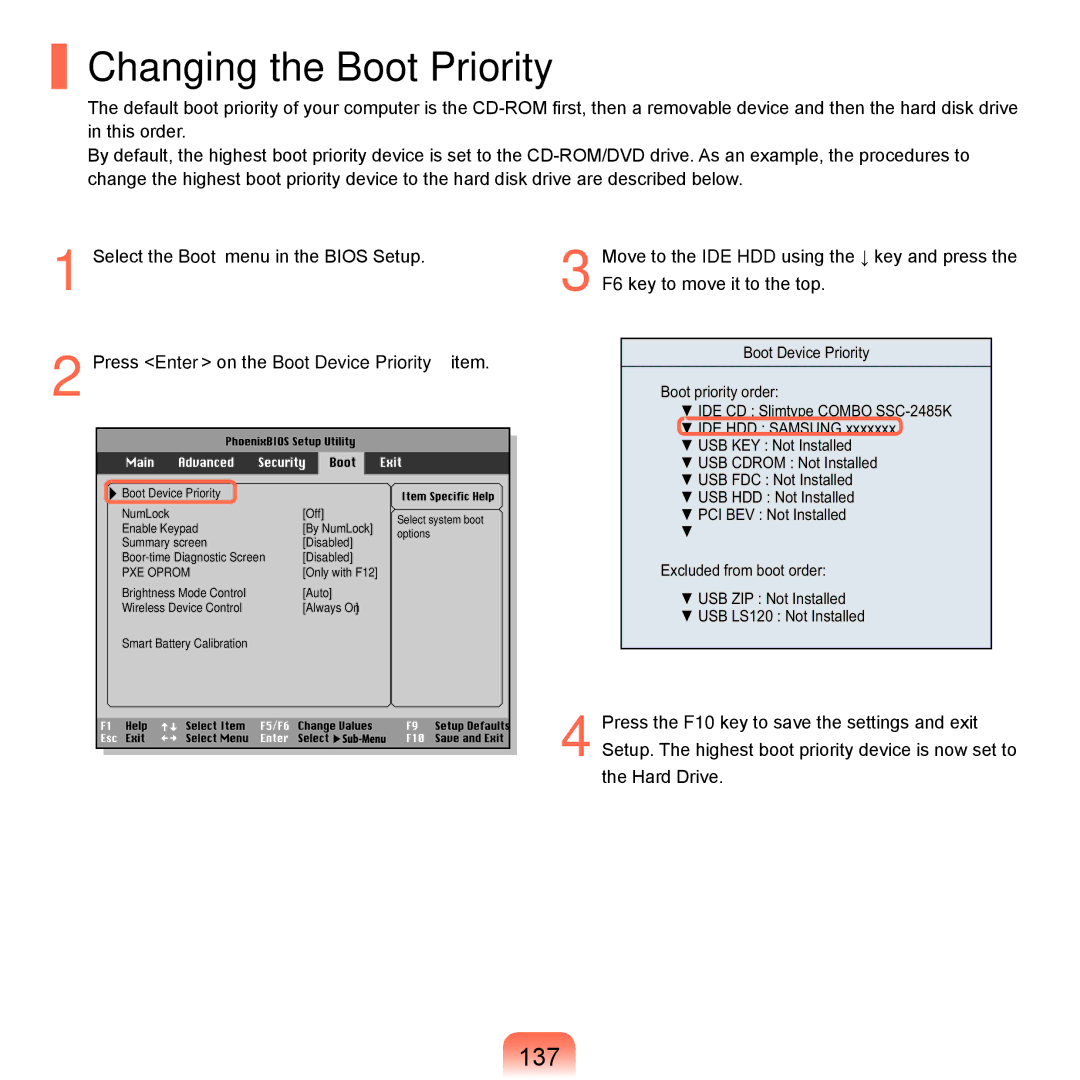
Changing the Boot Priority
The default boot priority of your computer is the
By default, the highest boot priority device is set to the
1 | Select the Boot menu in the BIOS Setup. | Move to the IDE HDD using the ↓ key and press the |
| 3 F6 key to move it to the top. |
2 Press <Enter> on the Boot Device Priority item. | Boot Device Priority | ||
Boot priority order: | |||
|
|
| ▼ IDE CD : Slimtype COMBO |
|
|
| ▼ IDE HDD : SAMSUNG xxxxxxx |
|
|
| ▼ USB KEY : Not Installed |
|
|
| ▼ USB CDROM : Not Installed |
|
|
| ▼ USB FDC : Not Installed |
Boot Device Priority |
|
| ▼ USB HDD : Not Installed |
|
|
| |
NumLock | [Off] | Select system boot | ▼ PCI BEV : Not Installed |
Enable Keypad | [By NumLock] | options | ▼ |
Summary screen | [Disabled] |
|
|
[Disabled] |
| Excluded from boot order: | |
PXE OPROM | [Only with F12] |
| |
Brightness Mode Control | [Auto] |
| ▼ USB ZIP : Not Installed |
Wireless Device Control | [Always On] |
| |
| ▼ USB LS120 : Not Installed | ||
|
|
| |
Smart Battery Calibration |
|
|
|
|
|
| Press the F10 key to save the settings and exit |
|
|
| 4 Setup. The highest boot priority device is now set to |
the Hard Drive.
